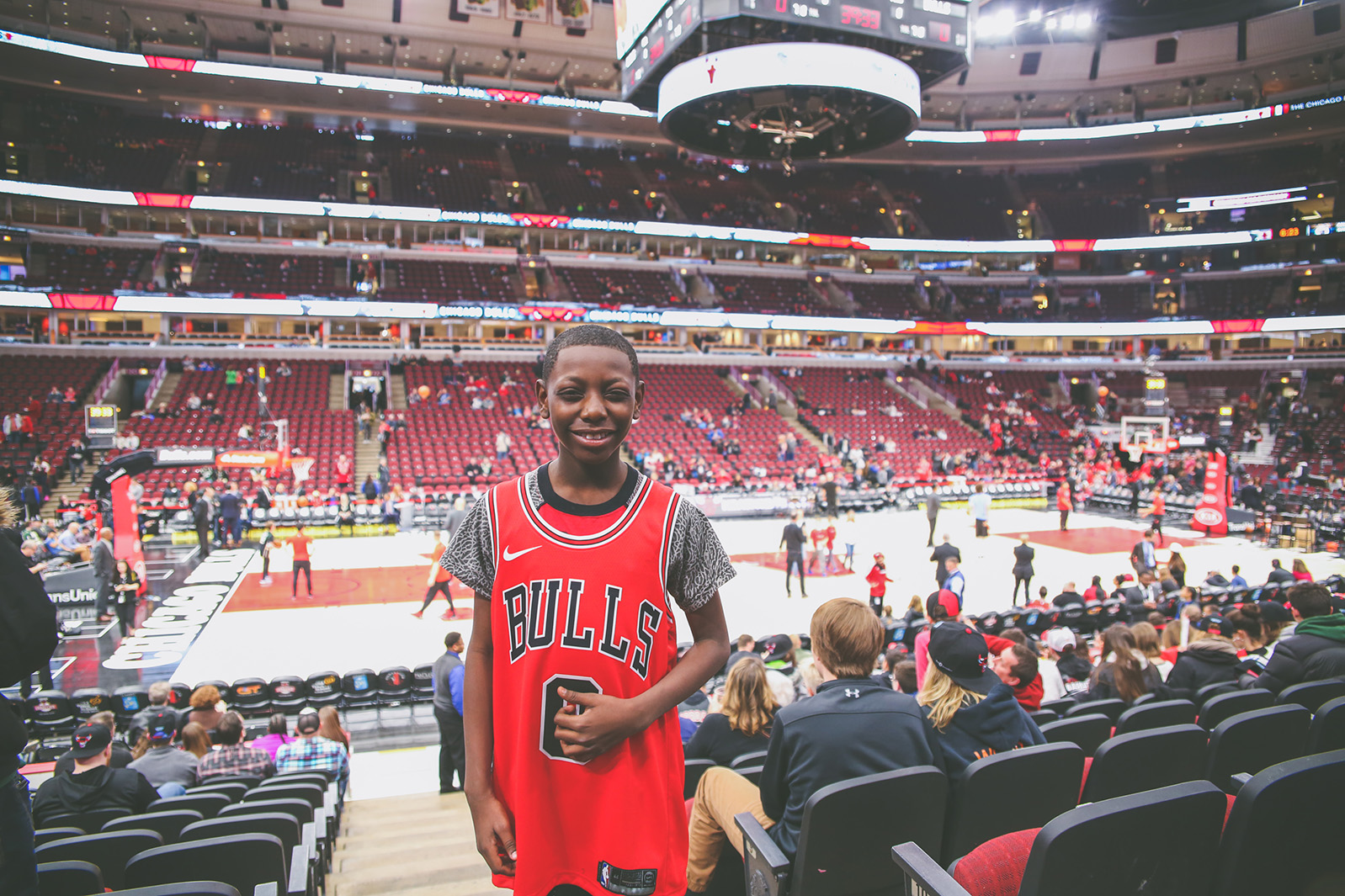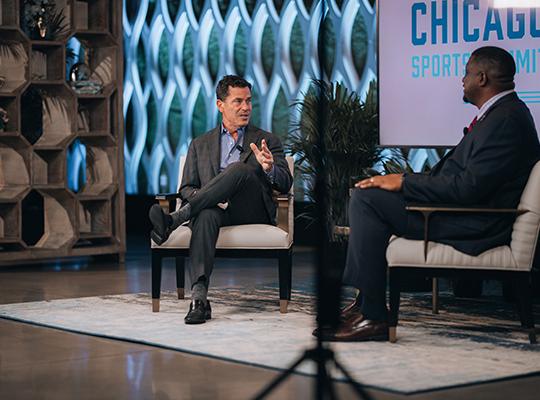
Jamari's diagnosis
Jamari Sanders’ mother, Sharenne Shumate, didn’t worry when Jamari returned with complaints of leg pain after a day of playing basketball at his uncle’s house. The eight-year-old said he had fallen, but Sharenne didn’t see any bones that appeared to be broken. Just to be sure, she took him to the nearest emergency room where doctors confirmed no broken bones, tendon or ligament tears. But two days later, when Jamari woke in the middle of the night in tears and complaining of pain, his mom knew something was very wrong.
After returning to a local doctor for more tests, Jamari was diagnosed with osteosarcoma of the right femur, or cancer in his right thigh bone. This is the most common form of bone cancer in children. Worried about Jamari’s spirits, Sharenne focused on finding a doctor who could both heal her son and continue to treat him like the strong, outgoing, and active little boy he is.
Finding a care team
Sharenne immediately contacted experts at Midwest Orthopaedics at Rush because she was familiar with Rush University Medical Center’s reputation. After a long visit, the family chose the team of Dr. Matthew Colman, orthopedic oncologist; Dr. Monica Kogan, pediatric orthopedic surgeon; Patti Piasecki, N.P., and Dr. Paul Kent, pediatric hemotology-oncology specialist at Rush University Medical Center. With the medical team decision made, Jamari and his family relocated from Wisconsin to Chicago to be closer to his care team.
As part of a carefully constructed treatment plan, Jamari began chemotherapy right away at Rush University Medical Center. Within a month, his tumor had shrunk by 95%, but Drs. Colman and Kogan discussed the importance of surgery to ensure that his cancer wouldn’t return. They approached Jamari’s family with two surgical options.
The first option was a series of several surgeries to remove the tumor and parts of the surrounding bone, then replacing that section with an implant. The procedure would mean lots of time in and out of the operating room and the possibility that the implant could break as he continued to grow. The second option was a rotationplasty, a procedure in which the knee joint is removed along with the tumor from the mid-thigh. Then, the lower leg, ankle joint, and foot – all unaffected by the tumor – are reattached backwards onto the remaining thigh bone. This allows the ankle bone, now rotated, to serve as the “new” knee joint and the foot to serve as an attachment point for a prosthetic lower leg.
Rotationplasty procedures are extremely unusual, with fewer than ten performed in the U.S. each year. This is because the diseases which make rotationplasty an option are rare and the nature of the procedure is unconventional. The procedure is typically the best option for very young children who still have significant growth remaining. This is not only because their bodies are more adaptable and resilient, but because the other main option, a metallic knee replacement prosthesis, is commonly associated with multiple complications and re-operations in this age group. Rotationplasty is complex and Drs. Colman and Kogan are among a short list of surgeons with the required skills to perform a successful rotationplasty.
Jamari’s medical and surgical team provided his family with research, websites, and videos which explained both procedures in layman’s terms. They even connected Jamari and his family with other patients who had had the procedure in the past. The family took a leap of faith and decided on the rotationplasty procedure.
“I would do it all again with the same team of doctors, nurses, and social workers,” Sharenne explained. “They gave us all the resources we needed to make the best decision.”
Sharenne was confident that the doctors, her son’s strength of spirit, and the support of her family would result in a successful outcome. “Rush really accommodated Jamari and our family,” Sharenne explained. “They made sure that we had a room big enough for all of us to be together on the day of the surgery. They gave us an update through every step of the procedure. Dr. Colman spoke with us immediately after the surgery to tell us that things went well. That meant the world to us.”
Wearing a cast to stabilize his new knee joint, Jamari underwent one more round of chemotherapy and then began physical therapy to build up his strength and get accustomed to walking with his new joint and prosthetic leg.
Reflecting on Jamari's journey
“He’s been much stronger than we have,“ Sharenne says. “He has stayed positive and worked very hard to turn a tough situation into the best possible outcome.”
When she reflects on her family’s journey, Sharenne is almost at a loss for words when she talks about the Midwest Orthopaedics at Rush medical team. “They’re just amazing. I am in awe. This whole experience made us appreciate life and the little things. It is clear to us that God touched the doctors’ hands to do such an awesome thing for Jamari.”
While he’ll need to be watched regularly for the next five years, Jamari, who’s now 10, is excited to join his friends back at school this fall and to continue being the bright, active boy that he has always been.



